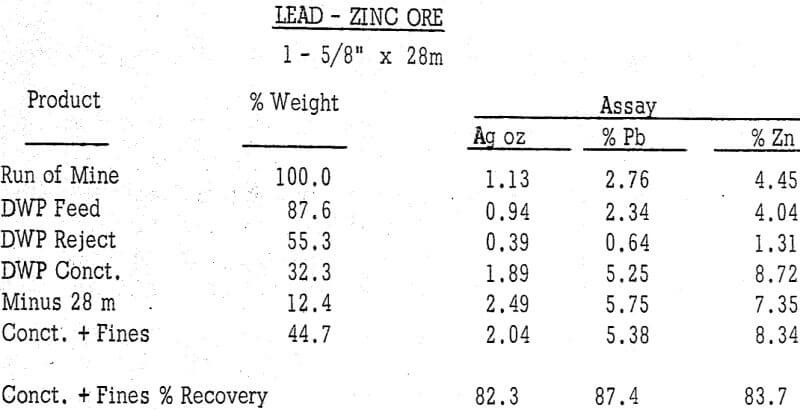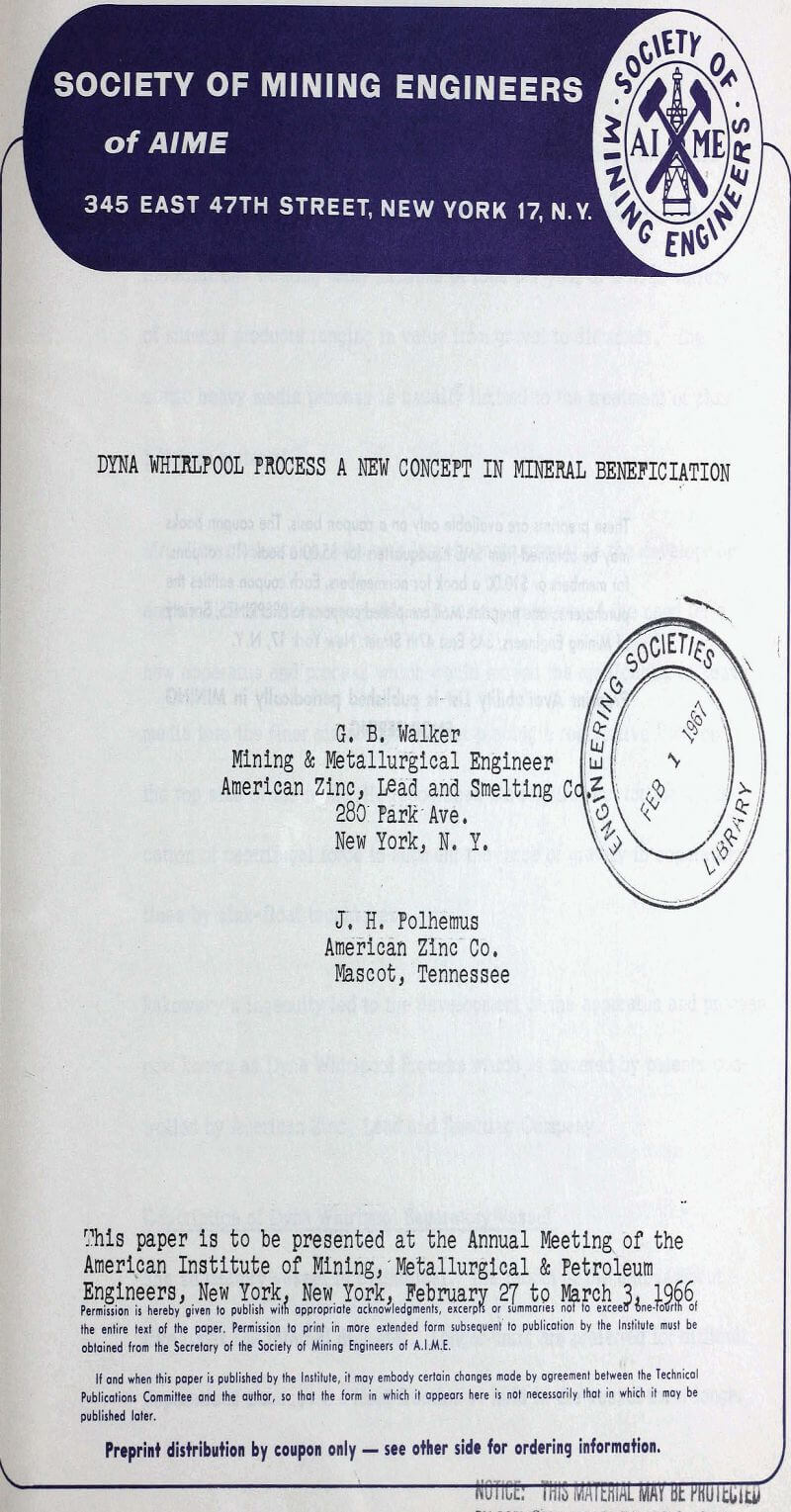Table of Contents
The success of Heavy Media Separation, the static sink-float process, is evidenced by the operation of an estimated 300 installations treating many millions of tons per year of a wide variety of mineral products ranging in value from gravel to diamonds. The static heavy media process is usually limited to the treatment of plus ¼ inch material.
Description of Dyna Whirlpool Separator/ Vessel
The separatory vessel is cylindrical. The length of the unit is about five times the internal diameter. Longer units are preferred for difficult separations because the float fraction is held in the vessel for a longer period, allowing more time for fine sink to reach the periphery. Tangential openings are provided near both ends of the cylinder. Circulating medium is pumped into the lower tangential opening. Sink product is discharged from the upper tangential opening. The included angle between the sink discharge tangent and the medium inlet tangent is critical in many cases. Usually an included angle between 25 degrees and 60 degrees is preferred.
In the operation of the Dyna Whirlpool Process feed medium of pre-determined specific gravity is pumped into the lower tangential inlet of the vessel. The medium stream spirals up the inner wall of the vessel and discharges tangentially through the sink discharge opening at the top. The sink discharge stream is carried by an adjustable elevated hose to the sink medium recovery screen. The elevation of the sink discharge hose creates back pressure at the sink discharge outlet and retards, to a controlled degree and without restriction, the volume of medium flow through the sink outlet.
The volume of medium passed through the sink discharge is less than the volume of medium pumped into the lower end on the vessel.
Operating Controls
The separation desired dictates the fluid separatory medium. Certain solids can be separated in a medium consisting of only water. Some grains and.seeds fall in this category. Mineral solids generally have a specific gravity higher than 1.0 and require & medium having a specific gravity intermediate the light and heavy fractions to be separated. Solutions of salts such as calcium chloride or zinc chloride may produce the desired specific gravity. Organic liquids such as the halogenated hydrocarbons may be suitable. Usually a fluid medium consisting of a water suspension of finely divided solids is found desirable for creating an apparent specific gravity of the slurry suitable for the separation of the mineral constituents of the ore and available at reasonable cost.
The strong centrifugal force generated in the Dyna Whirlpool vessel tends to create a high differential density between the medium discharged with the sink product and the medium discharged with the float product. It has been found that a moderate differential density is not detrimental to the separation but can, in fact, be turned to advantage by permitting the use of lower specific gravity solids than would be acceptable for the same separation in a static system because of excessive medium viscosity. For example, a mixture of equal parts of magnetite and ferrosilicon can be used in Dyna Whirlpool Process to make a separation that would require straight ferrosilicon in a static system.
The specific gravity of separation cannot be determined by measurement of any available medium stream. The specific gravity of the float medium will be lower than the specific gravity of the feed medium. The specific gravity of the sink medium will be higher than the specific gravity of the feed medium. The specific gravity of separation is between the specific gravity of the feed medium and the float medium.
Advantages of Dyna Whirlpool Process
- High metallurgical efficiency has been repeatedly demonstrated in many pilot plant test programs and in many high-tonnage operating plants.
- Medium flow pattern is independent of ore feed. Only the medium stream is pumped into the unit permitting the pressure and flow relationships to be established independent of the ore feed.
- Minimum wear on equipment because of minimum contact of rock with metal. The abrasive rock feed is not passed through a centrifugal pump, conveyed at high velocity through pipes and slammed at high velocity against the inner wall of the vessel.
- The factors outlined above as being responsible for minimum wear are also responsible for minimum degradation of the materials being separated. T
- Surge capacity is inherent in the Dyna Whirlpool Process as the basic design is such that surges in the feed tonnage and wide variations in the sink-float ratio of the feed components do not adversely affect the metallurgical efficiency of the separation.
- Size range treated. As previously mentioned Rakowsky’s original desire was to develop a process that would extend the size range of the feed treated by heavy media to sizes finer than had been previously handled by static heavy media methods.
Pilot Plant Test Results
A carload sample of minus 3/8″ plus 28 mesh classifier sand from a Western iron ore operation was treated with the following results:

This separation required treatment of the ore first at a relatively low specific gravity to produce a finished tailing and a primary concentrate. Retreatment of the primary concentrate at a higher specific gravity produced a finished concentrate and a middling.
A carload of lead-zinc ore from a western state was tested by Dyna Whirlpool Process to determine the feasibility of pre-concentration prior to an expensive truck haul to an existing mill for treatment by fine grinding and flotation. The DWP feed was sized minus 1-5/8″ and plus 28 mesh.


